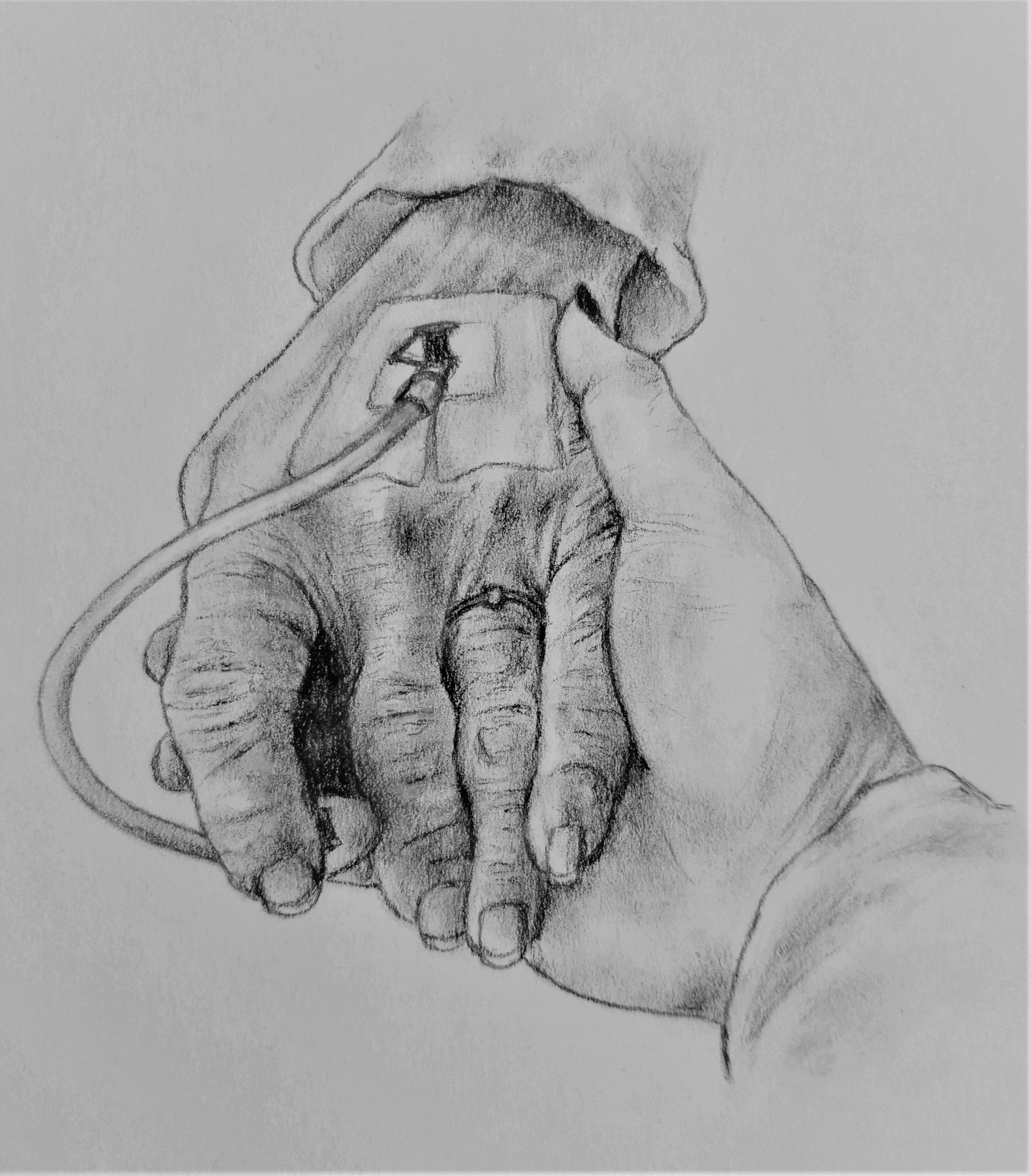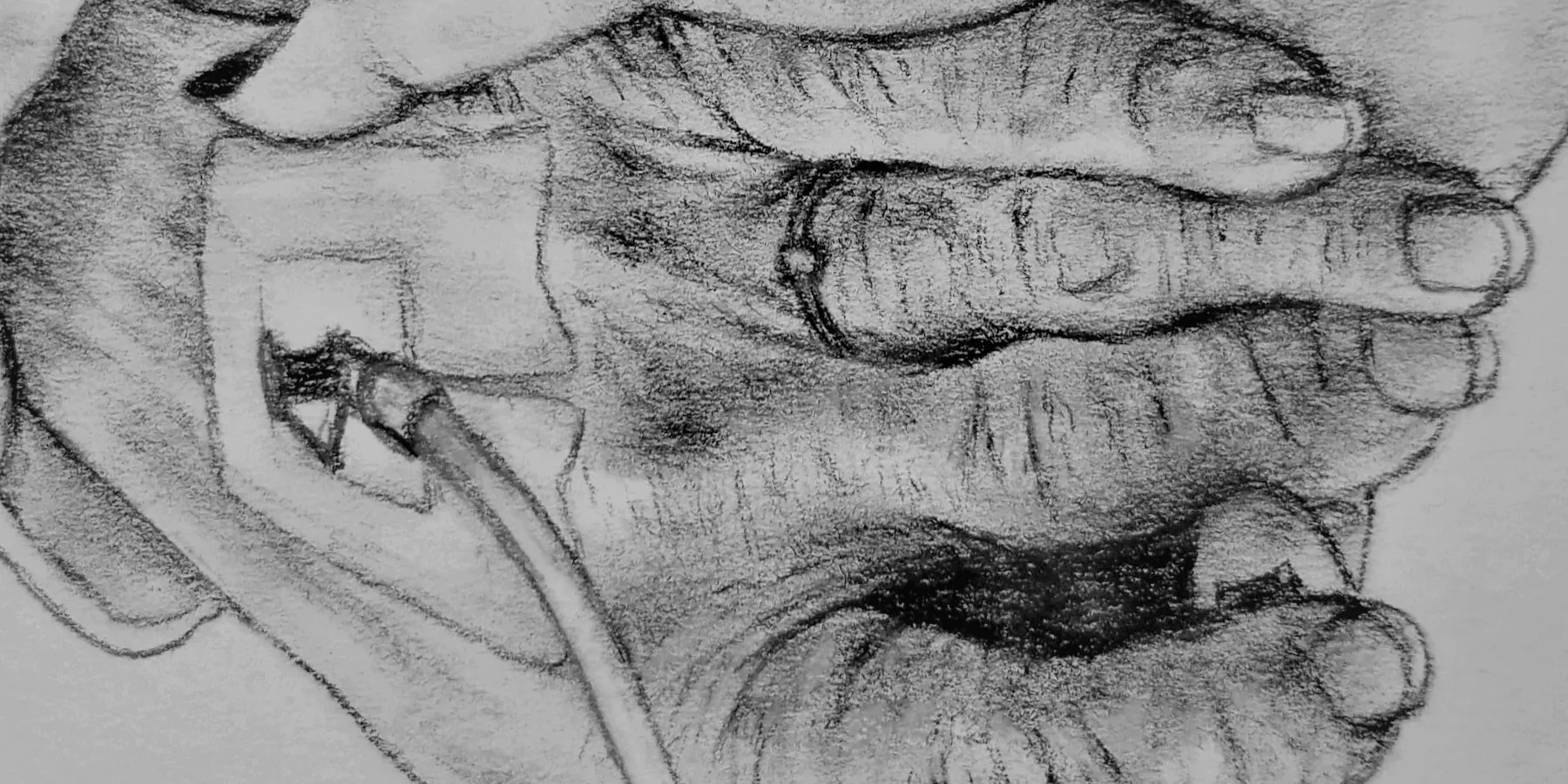Abstract
Good health care for elders requires acute ethical attention to the role of ageism as a pervasive source of bias. A charcoal drawing of one older woman’s hand visually examines the nature and scope of younger caregivers’ responsibilities to geriatric patients and their loved ones.
Figure. Health Care for the Aging

Media
Charcoal on paper.
In medicine, clinicians have responsibilities to patients across the lifespan. Geriatric medicine raises moral challenges such as end-of-life care, respect for autonomy, and cost containment of medical services.1 Ageism is becoming more prevalent in society and in medicine.2,3 For example, instead of treating an elder as a person with dignity, clinicians sometimes minimize the severity of elders’ concerns, attributing them to signs of “old age.” Ageism is also conveyed in communications—for example, when clinicians talk to elders as if they’re children, particularly when offering oversimplified instructions or explanations. Sensitivity to negative bias, clear communication, and thoughtful action are required to serve patients of any age well.2,3
This charcoal drawing depicts an elderly woman being treated via a hand cannula. A younger woman—a health care professional—holds her hand, offering support and expressing respect. The drawing represents the younger generation’s responsibility to maintain exceptional care standards for patients of any age.
References
-
Voumard R, Rubli Truchard E, Benaroyo L, Borasio GD, Büla C, Jox RJ. Geriatric palliative care: a view of its concept, challenges and strategies. BMC Geriatr. 2018;18(1):220.
- Burnes D, Sheppard C, Henderson CR Jr, et al. Interventions to reduce ageism against older adults: a systematic review and meta-analysis. Am J Public Health. 2019;109(8):e1-e9.
- Senger E. Ageism in medicine: a pressing problem. CMAJ. 2019;191(2):e55-e56.




